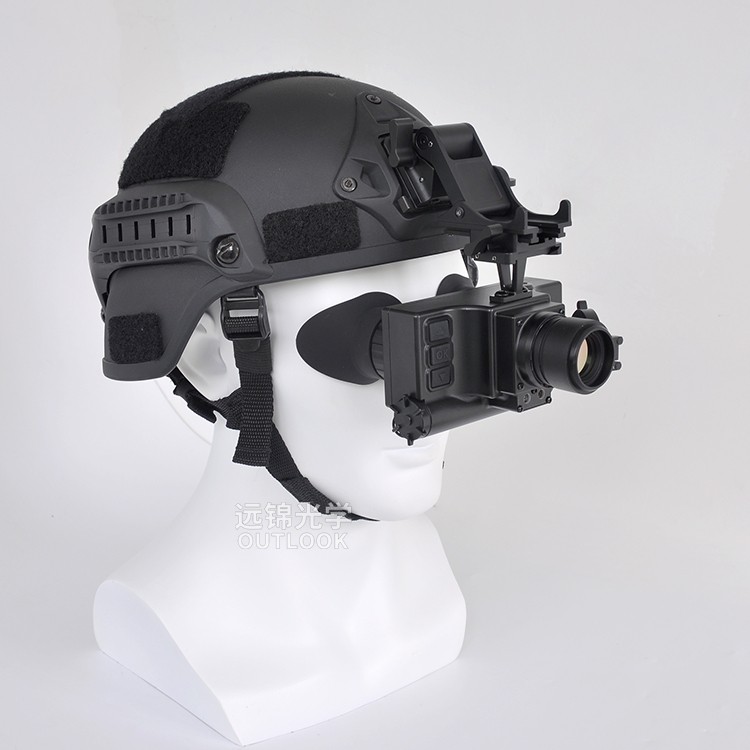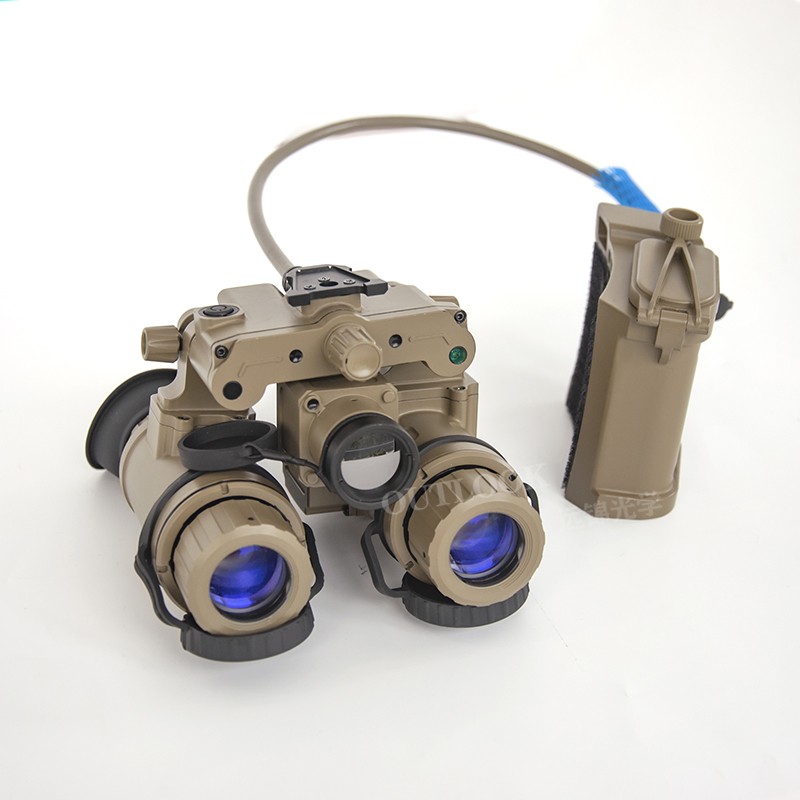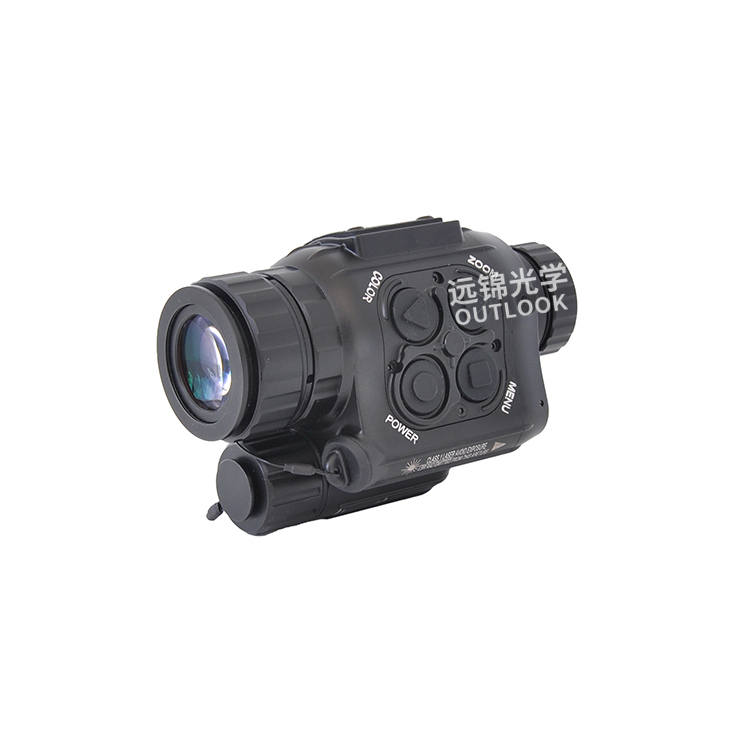Imaging principle and advantages of thermal imaging
1. Imaging principle of thermal imaging
Thermal imaging (Thermal Imaging) is based on the infrared radiation (thermal radiation) emitted by the object itself for imaging. Its core principles are as follows:
Infrared radiation detection
All objects with a temperature higher than absolute zero (-273.15°C) will radiate electromagnetic waves outward, among which the mid-to-far infrared band (3~14 μm) mainly carries thermal information.
Thermal imagers receive these radiations through infrared detectors (such as uncooled vanadium oxide (VOx) or cooled mercury cadmium telluride (HgCdTe)).
Signal conversion and processing
The infrared detector converts the received thermal radiation into electrical signals, which are then processed into temperature distribution maps through algorithms.
Different temperatures are displayed in different colors or grayscales (such as high temperatures are displayed in red/white, and low temperatures are displayed in blue/black).
Passive imaging vs. active imaging
Passive thermal imaging: relies on the object's own thermal radiation (such as human body and equipment heating).
Active thermal imaging: requires external infrared light source (such as night vision goggles with infrared fill light).
2. Advantages and characteristics of thermal imaging
Features Advantages and applications
1. All-weather operation Not affected by visible light, clear imaging can be achieved in the dark, haze, smoke and other environments.
2. Non-contact temperature measurement Measure the surface temperature of objects at a long distance (such as overheating detection of industrial equipment, human body temperature screening).
3. Penetration ability Can be imaged through smoke, dust, some plastics and other obstructions (fire rescue, military reconnaissance).
4. Strong concealment Passively receive infrared signals, not easy to be detected (military sniping, security monitoring).
5. Dynamic monitoring Real-time display of temperature changes (such as circuit short circuit warning, observation of wild animals at night).
6. No light source dependence Not dependent on visible light, suitable for completely dark environments (cave exploration, night operations).
7. Safe and environmentally friendly No radiation hazards (unlike X-rays), suitable for medical, food testing and other fields.
3. Typical application scenarios
Military and security
Night vision goggles, sniper scopes, drone reconnaissance, border monitoring.
Industry and energy
Power equipment thermal fault detection, solar panel efficiency analysis, pipeline leak investigation.
Medical and epidemic prevention
Body temperature screening (such as during the COVID-19 pandemic), blood circulation diagnosis, inflammation localization.
Firefighting and rescue
Fire scene search and rescue, heat source location, building structure safety assessment.
Scientific research and natural observation
Wildlife night behavior research, volcanic/geothermal activity monitoring.
4. Limitations
Inability to penetrate glass/metal: Infrared radiation will be reflected or absorbed, resulting in imaging failure.
Resolution is low: Compared with visible light cameras, thermal imaging images
Imaging principle and advantages of thermal imaging night vision devices
Imaging principle and advantages of thermal imaging night vision devices
Thermal imaging night vision devices (Thermal Imaging Night Vision Device) is a night vision technology based on infrared thermal radiation detection, which can clearly image in harsh environments such as complete darkness, smoke, and haze. It is different from traditional low-light night vision devices (which rely on weak light amplification) and mainly relies on the infrared radiation emitted by the object itself for imaging.

I. Imaging principle of thermal imaging night vision devices
1. Infrared radiation detection
All objects with a temperature above absolute zero (-273.15°C) will radiate infrared rays (thermal radiation) outward, and the wavelength range is usually 3~14 μm (mid- and far-infrared band).
Thermal imaging night vision devices receive these radiations through infrared detectors (such as uncooled vanadium oxide (VOx) or cooled mercury cadmium telluride (HgCdTe)).
2. Signal conversion and processing
The detector converts the received infrared radiation into electrical signals, and then forms a temperature distribution map after signal amplification and digital processing.
Different temperature areas are displayed in different colors or grayscales (such as high temperature is displayed as red/white, and low temperature is displayed as blue/black).
3. Passive imaging (no external light source required)
Thermal imaging night vision device does not rely on visible light, but relies entirely on the thermal radiation of the object itself for imaging, so it is suitable for completely lightless environments (such as caves, nighttime wilderness).
2. Advantages and characteristics of thermal imaging night vision device
Features Advantages and applications
1. All-weather operation Not affected by light, it can clearly image in extreme environments such as darkness, fog, smoke, and sandstorms.
2. Strong concealment Passively receives infrared signals, does not emit any light, and is not easily detected by the enemy (military sniping, special operations).
3. Penetration ability Can penetrate smoke, leaves, and some camouflage for imaging (suitable for battlefield reconnaissance, firefighting and rescue).
4. Long-distance detection High-end thermal imagers can detect targets several kilometers away (such as military drones, border monitoring).
5. Non-contact temperature measurement Can measure target temperature (such as searching for survivors, monitoring equipment overheating).
6. Dynamic target tracking Suitable for night hunting, wildlife observation, security monitoring and other scenarios.
7. No light source dependence More adaptable to completely dark environments than traditional low-light night vision devices (such as underground caves, deep-sea exploration).

III. Typical applications of thermal imaging night vision devices
1. Military and security
Military night vision devices (snipers, special forces)
UAV reconnaissance (battlefield monitoring, border patrol)
Counter-terrorism and security (airport, nuclear facility monitoring)
2. Law enforcement and rescue
Police night law enforcement (chasing fugitives, drug control)
Firefighting and search and rescue (locating heat sources in fire scenes, detecting survivors in ruins)
3. Civil and outdoor
Night hunting (tracking animal heat signals)
Field exploration (night navigation, avoiding dangerous animals)
Automotive night vision system (enhancing night driving safety)
4. Industrial testing
Power equipment inspection (detecting overheating faults)
Building heat leak detection (energy-saving audit)
IV. Limitations of thermal imaging night vision devices
Limitations
Description
Unable to see through glass
Glass reflects infrared rays, causing thermal imaging to fail (such as being unable to see through the car window).
Lower resolution Thermal imaging usually has lower pixels than optical imaging (but high-end models are close to HD).
Affected by the environment Extremely high or low temperatures may affect image quality (such as desert heat or extreme cold).
Higher price High-end military-grade thermal imagers cost much more than low-light night vision devices.
Summary
Thermal imaging night vision device has an irreplaceable role in the military, security, rescue and other fields due to its advantages such as all-weather working ability, strong concealment and ability to penetrate smoke. Despite the limitations such as low resolution and inability to penetrate glass, the application scope of thermal imaging night vision devices is still expanding with technological advances (such as higher-resolution infrared detectors and AI image enhancement).


